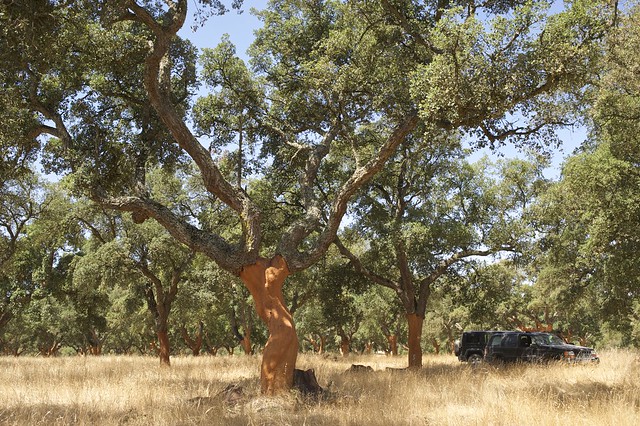Back in June of last year, Kemey and I popped down to Portugal for an immersive two-day crash course in one of the country’s most enduring, sustainable and biggest industries: cork.
I would love for you to think that the reason it’s taken so long for me to get round to writing about my trip was because I was purposefully and patiently waiting for my ideas to mature – like some fine wine in a bottle with a cork stopper – to make for an especially delectable and informative read. However, the truth is that simply I’ve been slammed and have only now found the time (for a brief moment anyway) to tell this story.
It’s a corker of a tale though, and one that I wanted to stand out on the blog and not get buried under a heavy stack of unrelated posts.
Reporting on the subject got a little trickier too – as Kemey and I became such fans of the woody stuff that we picked up a case or two of cork tiles to line one of the walls of our house. It looks fantastic. Pics and details shall come soon.
Our all-things-cork education took us from forests in the south to processing facilities in the north. During our visit, we were the guest of Amorim, a family business dating to the 1870s and today’s world leader in cork production.
That cork stopper in your bottle of wine that you maybe sniff after you pull it out and then discard? It along with millions of other stoppers – not to mention all sorts of other cork products you maybe never even imagined might exist – very likely came from the bark of ancient tree in a Portuguese forest and was probably manufactured by Amorim.
Stay tuned as I share more about our visit to one of my favourite destinations– and its most fascinating product – in a brief series of posts about cork production in Portugal.






















